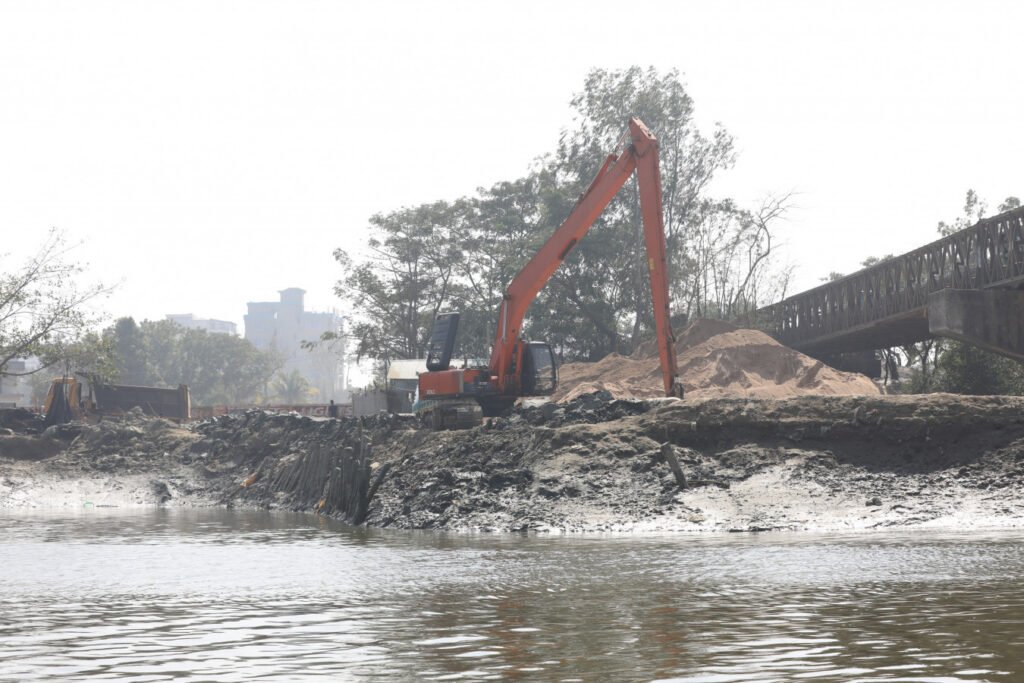Without proper guidance or a definite roadmap, such efforts will mean little in the bigger picture of conservation
One of the great tragedies of our country is that whenever something goes wrong, no one tries to fix it. The same has happened when the environment has been damaged to such an extent that the summer is unusually hot this year. Perhaps it may be the least warm year compared to the ones in our future.
It is a common concept that planting more trees will save the environment. But, is it enough? We have damaged the environment through faulty or ineffective policies. How can people solve it by planting trees alone?
Fresh water is disappearing
The water level is rapidly declining all over the country, including in Dhaka.
In Dhaka, where the water was below 25 meters in 1996, it now reaches 75 meters. The same is occurring even outside of Dhaka.
I went to Meherpur during Eid. Many ponds in Meherpur have now dried up marking the scarcity of fresh water, which makes the country more vulnerable to earthquakes. Has anyone made an effort to stop these actions?
Moreover, there are residential projects that are exacerbating the water crisis. A city should have 15% of its water bodies. However, Dhaka has only 2.9%. And even that is being encroached upon by people.
Let me give an example. There used to be a reservoir in Satarkul. That day, I saw people occupying the area with bamboo fences. This is a recurring sight all across the country.
Now, let us talk about rivers. River researchers say that there were 750 rivers in Bangladesh in the 1960s. Currently, this number has been reduced to only 230. So, 520 rivers have disappeared in 50 years. It’s as if there is a festival for river filling. Who is behind this?
Also, many of our rivers are disappearing due to dams in upstream India. India has built or is building numerous projects on almost every river and its tributaries. Already, 4,300 dams have been constructed in the river basins in 22 of the 29 states of the country.
The number of planned dams in Ganges-Brahmaputra-Meghna (GBM) basin countries is 414. Among them are 285 in Nepal, 108 in India, 12 in Bhutan, 8 in China, and 1 in Bangladesh.
China plans to divert 20,000 billion cubic feet of water annually from Yarlung Tsangpo, the Chinese part of the Brahmaputra River to the Yellow River. India is also planning to build its second-largest dam on the Brahmaputra at Yingkiong in Arunachal Pradesh. That way, Brahmaputra will die too! We need more proactive measures from our foreign ministry.
To understand the gravity of the situation, one should look at Padma. There is no fish in the river, no current, and silt has accumulated.
Have we ever said anything about Teesta on an international forum? The issue has been left hanging for years to no end.
Researchers say that if conditions continue as they are, the shortage of drinking water will become severe by 2040. Although there have been many wars over water, there has not been one in recent times. Experts believe that if another World War were to happen, it would be about water.
The root causes
Even though the population is not increasing as per the official report, cultivation land is decreasing for building houses, and trees are being cut down. Cultivable land is decreasing by 38,000 acres every year. So how much has it decreased in 50 years?
At this rate, deforestation will consume more land. To prevent this, we should follow India’s example. India has a cultivation land conservation law. So why don’t we pass a similar law in our country?
Bangladesh is at the top of forest land encroachment worldwide. The occupied forest land in the whole country is 2,57,000 acres. A clique of powerful and influential interest groups are generally behind the encroachment. They are cutting down valuable trees from protected lands and forests. It causes severe loss of biodiversity.
Let’s talk about infrastructural changes to the cityscape. Many 2-lane roads in the country are being converted into 4-lane roads, and the vast trees that used to stand on the side of the road have been methodically cut down. It is challenging to find trees in Dhaka now.
Most days, Dhaka ranks at the top position in the most-polluted air ranking.
In a world where fossil fuel power plants are decreasing in number, we are accelerating its use. We are transporting coal through the Sundarbans River. We have damaged the environment in the last 15 years for development. But do we not notice its dire impacts now?
Now the policymakers are worried because it is hot. They spray water to cool the people down after cutting down all the shade-giving trees — this is a wasteful measure and ineffective because it does not address long-term problems. They will decry the floods when the monsoon comes. But, where is the feasible solution?
What to do now
People are becoming aware though. Some parts of Dhaka city are seeing green rooftops due to the residents’ initiative.
However, most plants will die if planted in this heat. The best time to plant is during the rainy season. We need to prepare before that. Experts should be consulted about which tree is suitable. And not only about planting trees but also how to save trees. We must not forget that trees have life too.
Many of our houses have solar panels installed on the roofs. Most of which do not function. Measures should be taken to fix them. Strict laws are needed to prevent reservoirs from filling and destroying agricultural land. Canals need to be restored.
Moreover, to bring back the river, our government has to take a decisive role in the international arena.
It will take at least 15 years to repair the damage we all have done to the environment in our country.
